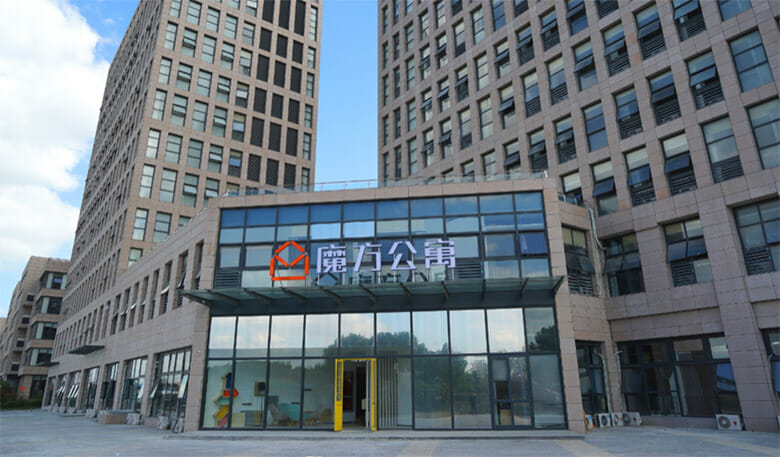
A Mofang complex in Shanghai’s Songjiang area (Image: Mofang)
Mofang, the Chinese rental apartment operator backed by private equity major Warburg Pincus, has refiled for a Hong Kong initial public offering after the company’s previous application filed last September lapsed late last month.
Shanghai-based Mofang, which is seeking a public listing under the name Cubic City Service Apartment Group Holdings Ltd, has 76,245 apartments in operation across 388 locations in 25 cities, according to an application proof submitted last Friday to the Hong Kong stock exchange.
The company’s brands include Mofang Apartment, which targets white-collar workers looking for rental housing, and Unit 9 Apartment, which provides dormitory-type living to blue-collar workers. Chaired by Alex Zheng, who made his fortune founding Warburg-backed Chinese budget hotel chain 7-Days Inn, Mofang plans to increase its market share and expand its apartment portfolio in core Chinese cities.
“We believe that the flexibility of our operating models and the strong recognition of our brands, coupled with our leading operational capabilities, allow us to deepen market penetration and enter new markets quickly and efficiently,” the company said in the filing.
Asset-Light Approach
Mofang does business two ways: under a leased-and-operated model in which the company enters leases with property owners or sublessors, and through a “manachising” or third-party managed model in which it provides operations and management services to franchisees or entrusting parties.

Mofang chairman Alex Zheng (Image: Mofang)
The company launched its centralised rental apartment business in Nanjing in 2009 and expanded to Shanghai and Guangzhou in 2013, Beijing and Shenzhen in 2014 and Hangzhou in 2016. In 2021, the number of leased-and-operated apartments in Shanghai jumped from 7,289 to 25,596 when Mofang acquired dormitory-style apartment operator Chummy Space and 21 project companies of Warburg-backed Vlinker.
The 2021 acquisitions helped boost Mofang’s revenue by 55 percent that year to RMB 1.47 billion (now $210 million). Growth slowed to 16.5 percent in 2022 as revenue reached RMB 1.71 billion, driven by contributions from newly launched apartment communities integrated through strategic acquisitions in the fourth quarter of 2021.
The company’s recent ups and downs have reflected the on-and-off nature of China’s COVID-19 restrictions, with Mofang booking a net loss of RMB 230.3 million in 2020, swinging to a net profit of RMB 301.9 million in 2021 and backsliding to a net loss of RMB 246.6 million in 2022.
With COVID impact gradually fading, the occupancy rate of leased-and-operated apartments rose by 3.2 percent in February and 3 percent in March, while the renewal rate of residents jumped 11.5 percent in February, Mofang said.
Investment banks Morgan Stanley and CCB International, a subsidiary of state-owned China Construction Bank, are the joint sponsors of the planned IPO.
Culture Change, Policy Shift
Qiqi Zhang, who led US-based Warburg’s investments in Mofang, Vlinker and Sachin Doshi’s successful Weave Living in Hong Kong, told MTD TV in March that many in China have begun to rethink the country’s homebuying obsession and consider the rental option.
“The long-term belief that housing prices continue to rise and will never go down, probably will not hold true from now on,” the Warburg Pincus managing director said then. “Traditionally, when people had money, they would just save every penny and try to buy a house with a mortgage, but that may change in China and that will (prompt) a strong shift in the demand side.”
With issues of housing affordability continuing to plague the mainland economy, policymakers have been encouraging the development of a rental housing industry and have provided incentives including lower taxes, enhanced land supply and favourable financing terms to investors in the sector.
The government has also designated a special type of land use rights for rental housing, with major cities including Shanghai and Beijing now selling land restricted for development of multi-family projects.
Leave a Reply